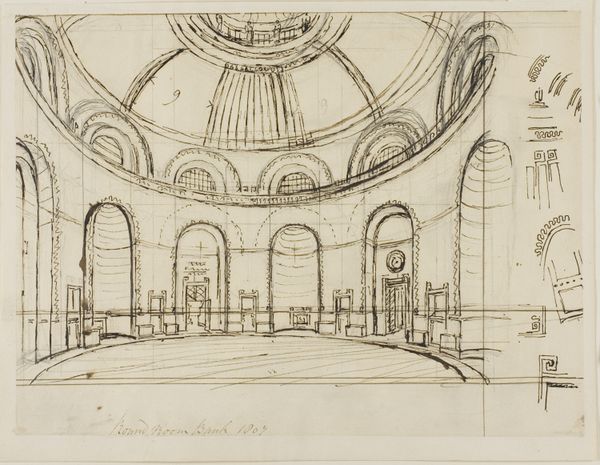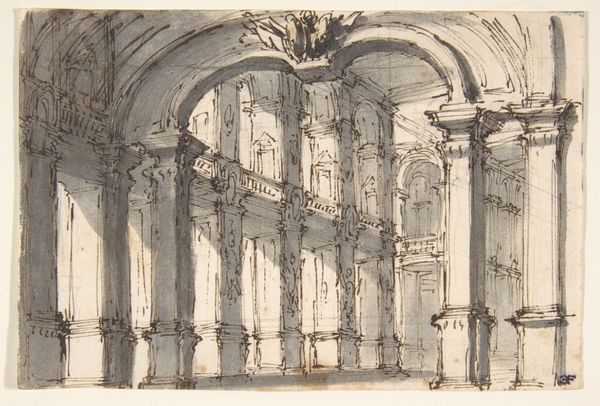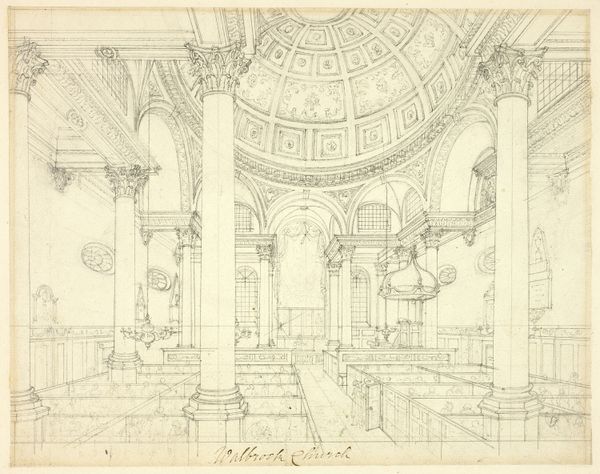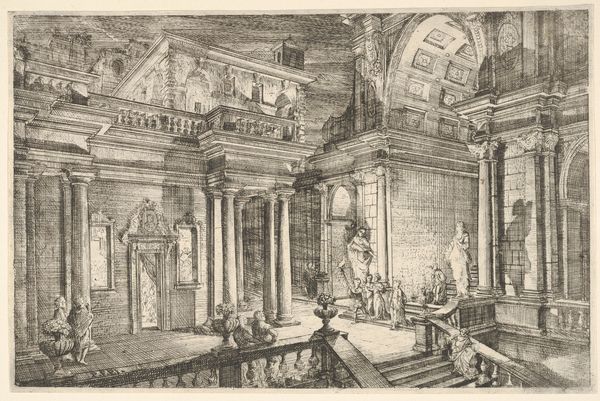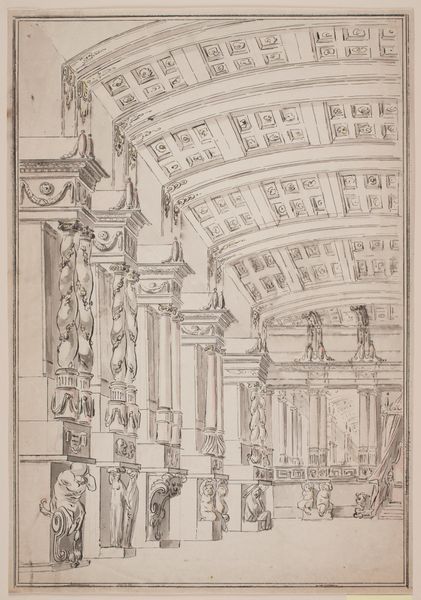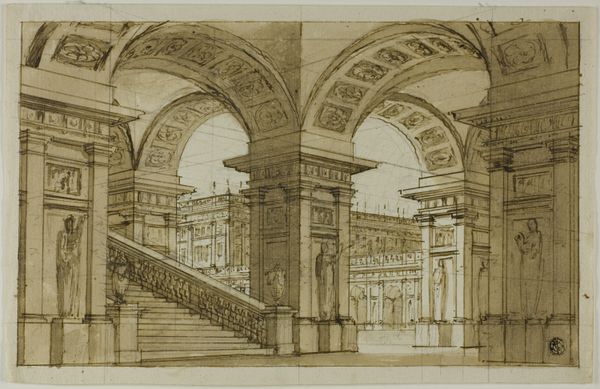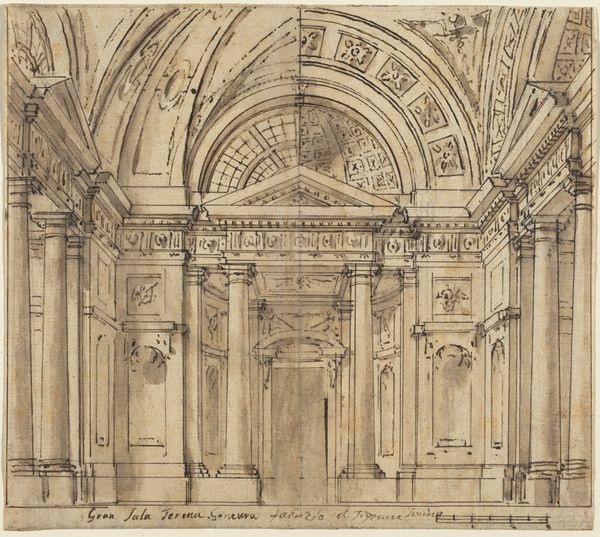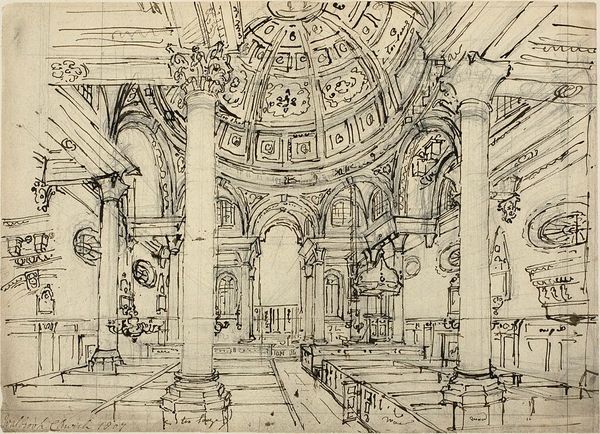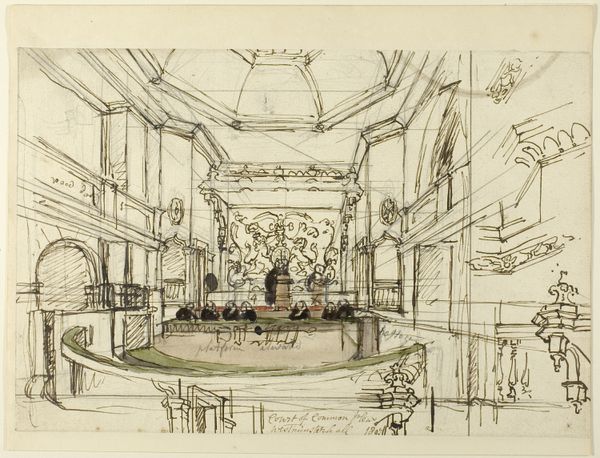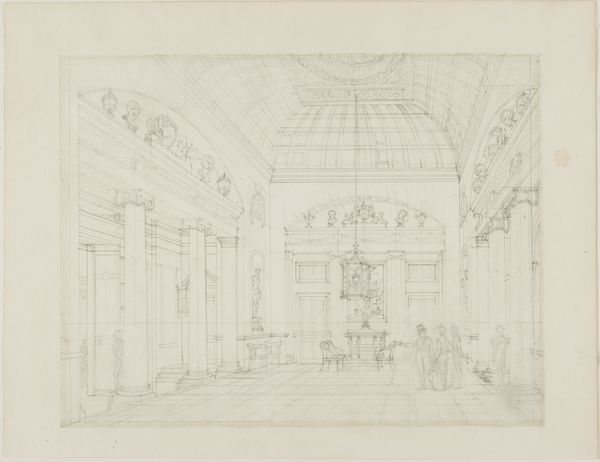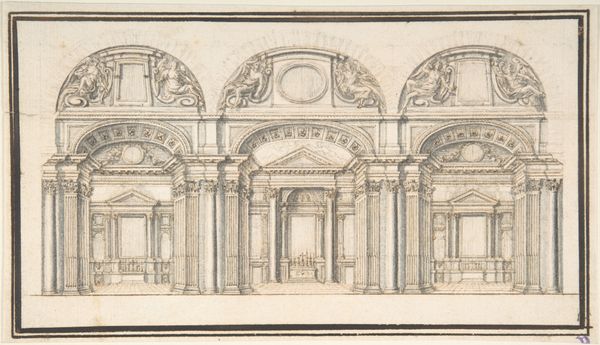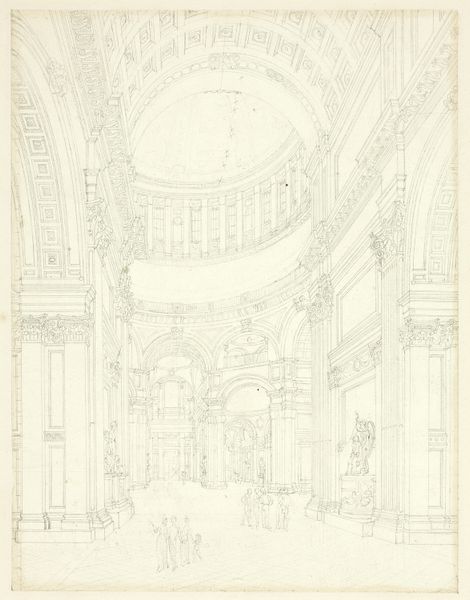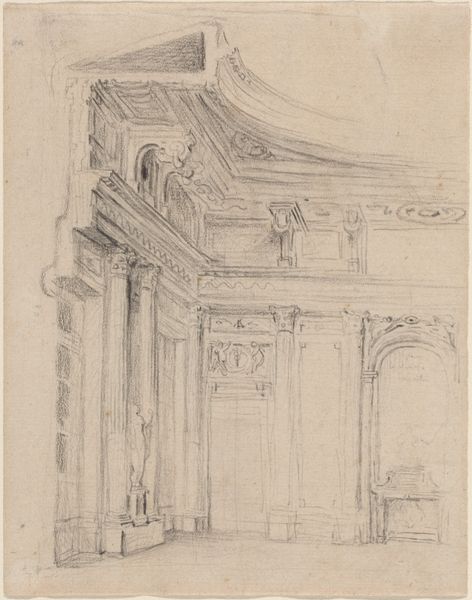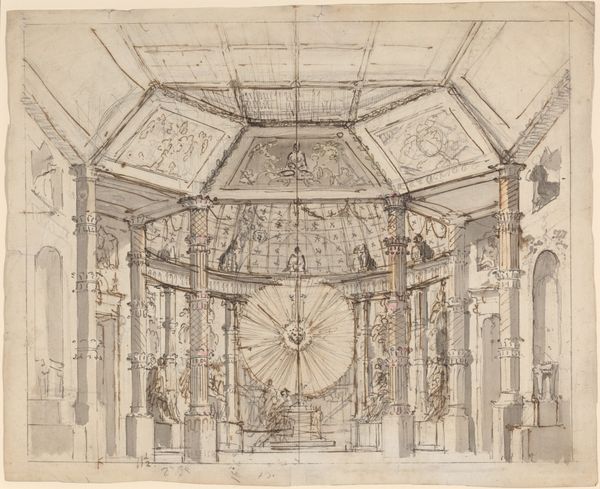
Study for Egyptian Hall Mansion House, from Microcosm of London c. 1809
0:00
0:00
drawing, print, etching, paper, ink, pen, architecture
#
drawing
#
neoclassicism
# print
#
etching
#
etching
#
paper
#
ink
#
pen
#
academic-art
#
architecture
Dimensions: 189 × 306 mm
Copyright: Public Domain
Editor: This is a study for Egyptian Hall Mansion House, created around 1809 by Augustus Charles Pugin, using pen, ink, etching, and paper. It's incredibly detailed. The precision of the lines, even in what is essentially a sketch, gives a feeling of immense scale and formal structure. What draws your eye in this piece? Curator: I'm immediately drawn to the process itself. Notice the layering of the etching with ink and pen work. Consider what this tells us about the economics of architectural representation at the time. Pugin wasn't just envisioning space; he was creating a reproducible image for consumption, likely connected to land speculation or civic ambition. The 'finish' is less important than the means of dissemination and promotion of the architectural project. Editor: So you're less interested in the aesthetic choices and more in how this image would have been used and circulated? Curator: Precisely. Look at the numerical annotations along the columns. These are instructions, notes for the workshop. It transforms this “art object” into a document of labour, of a collective production process rather than individual artistic genius. The pen strokes that create the Corinthian capitals also supported entire families of artisans. It forces us to rethink what 'high art' meant in relation to these processes of craft and making. Editor: That’s a really different way to see it. I was so focused on the architectural detail, the neoclassicism… I hadn't thought about the labor behind the image itself. Curator: Exactly. The 'style' serves the 'function.' The means of creating and circulating such images determined architectural tastes, not the other way around. Editor: That completely reframes the drawing for me. Now I'm wondering about the etchers and draughtsmen... the whole commercial art world that existed around these projects. Curator: And that’s the materialist approach. Always asking, "How was it made, by whom, and for what economic purpose?". Editor: Thank you! It’s made me rethink how to look at architectural drawings.
Comments
No comments
Be the first to comment and join the conversation on the ultimate creative platform.
